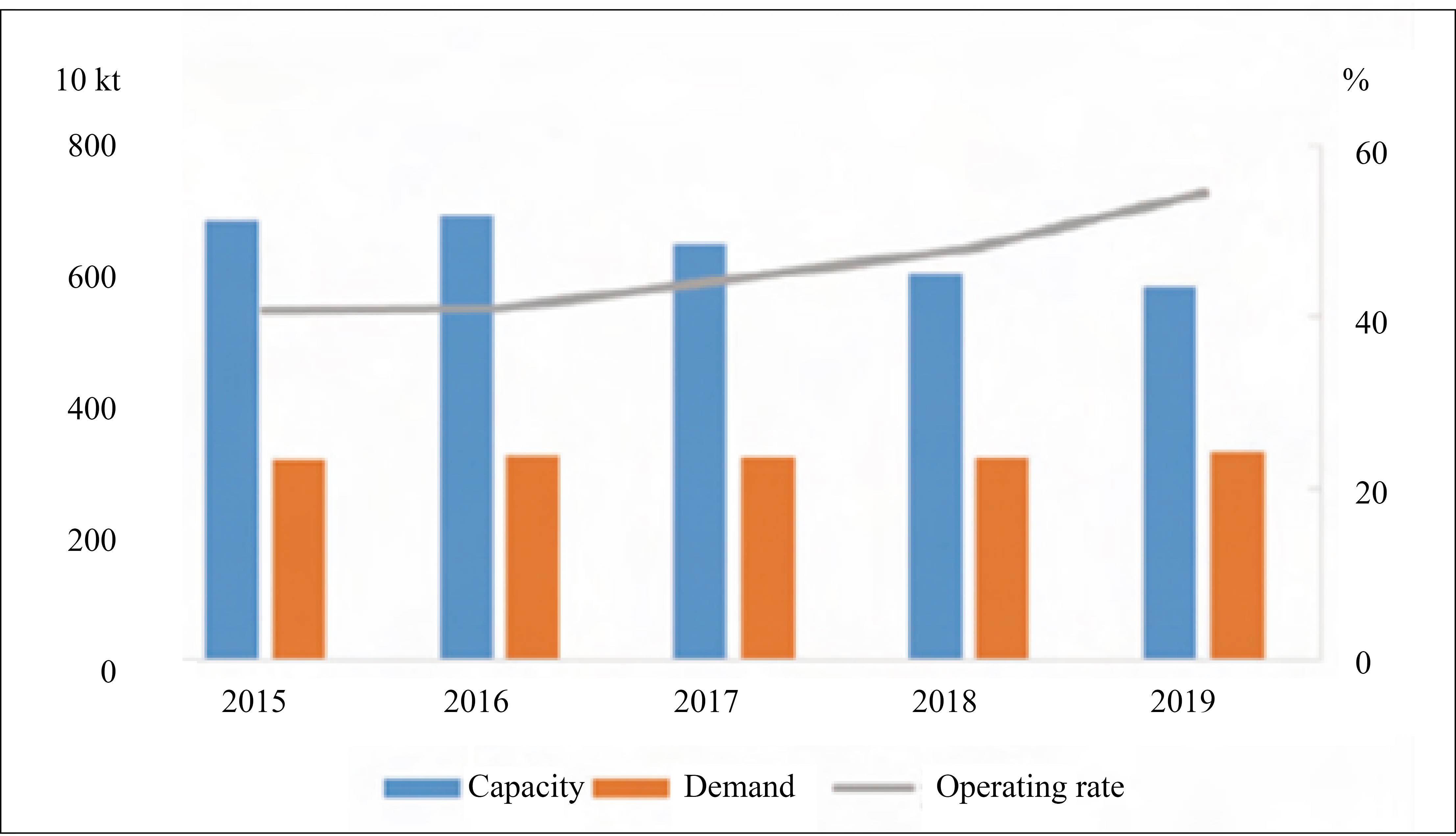By Song Xiaodong, Sublime China Information Co., Ltd.
Superior in thermal insulation, shock resistance, ageing resistance and waterproofness, expandable polystyrene (EPS) is mainly used in bubble wrap and heat preservation in building.
Oversupply was hard to change
Obviously released demand for EPS, main heat insulating materials for building exterior, stimulated firms to kick off new projects. This exacerbated overcapacity as supply and demand can hardly grow at the same pace.

Figure 1 China’s EPS supply and demand during 2015-2019
Average growth rate of EPS capacity was negative 3.89% during 2015-2019, which was mainly attributable to environmental protection, less demand stimulus, severer competition and elimination of outdated facilities. In the same period, EPS demand was up 0.99% annually, capacity utilization showed an upward trend but equipment load hovered at around 50%.
A feature of regionalized sale emerged
East China accounted for around 45% of domestic EPS capacity due to convenient transportation, bubble wrap sector’s strong demand for EPS, geographical location (near major import and export ports of styrene), etc. With development of the EPS industry and severer competition, regionalized sale has gradually emerged, especially in Xinjiang and south China.
Large EPS firms have carefully choreographed factory distribution in recent years. For example, Xingda Company established plants in northeast China, northwest China, east China and south China, improving regional sale competitiveness.
Cost impact could not be ignored
EPS is closely related to its direct upstream monomer styrene. Theoretical profit level of EPS soared 69.85% YoY in 2019, and in 3Q 2019 prices fluctuated more sharply. In addition, EPS supply barely met demand due to environmental protection, late delivery of raw materials, and firms adjusting production & marketing. This also raised apparent profit level of EPS.

Figure 2 Market trends of EPS and styrene
EPS profits kept being high in 2020, with average theoretical profit reaching RMB1 480/t in January-mid May. Although EPS prices fell after the Spring Festival, price difference between EPS and styrene has been expanding given a bigger price decline of styrene.
EPS market outlook in 2020
In 2019, EPS price reached the highest of RMB10 700/t in September, and fell to the lowest of RMB9 000/t in late November-December. However, EPS prices plummeted to a low since March 2009 in the first quarter of 2020, when COVID-19 postponed project construction, curbed demand and resulted in collapse of oil prices. Propelled by rebound of international oil prices and styrene prices in April, EPS firms tried to raise prices, but with new units gradually coming on stream in the second half of 2020, they will feel stressful. Overall, EPS prices in 2020 are forecast to be lower than those in 2019.

Figure 3 Trends of China’s EPS common materials
China’s EPS capacity has been shrinking from 2017 to 2019, reaching around 5.82 million t/a in 2019. But industry profit level was acceptable as large firms propelled regionalized marketing. In 2020, new units boasting a combined capacity of 940 000 t/a will come on line.
While gradually losing driving forces from real estate and home appliance sectors, continuing growth of downstream demand for EPS will be hindered by XPS, molded pulp tray and EPP. But new driving forces may be found in bubble wrap industry considering fast-growing e-commerce platforms, cold-chain logistics, etc. Overall, oversupply of EPS will be hard to change in a short term.